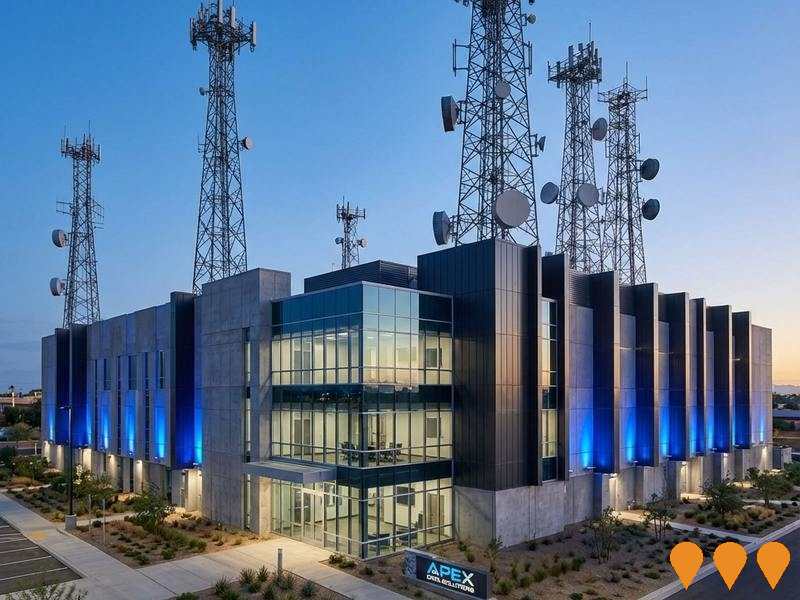Chart Color Schemes
est. as @ -- *
ABS ERP | -- people | --
2021 Census | -- people
Sales Activity
Curious about local property values? Filter the chart to assess the volume and appreciation (including resales) trends and regional comparisons, or scroll to the map below view this information at an individual property level.
Find a Recent Sale
Sales Detail
Population
Palm Island is positioned among the lower quartile of areas assessed nationally for population growth based on AreaSearch's assessment of recent, and medium term trends
Palm Island's population, as of August 2025, is approximately 2,335. This figure represents an increase of 237 people, a rise of 11.3% since the 2021 Census, which recorded a population of 2,098. The growth is inferred from the estimated resident population of 2,287 in June 2024 and six additional validated addresses since the Census date. This results in a population density of 32 persons per square kilometer. Palm Island's growth rate exceeded that of its SA3 area (3.7%) and SA4 region, positioning it as a growth leader in the region. Natural growth was the primary driver of this population increase.
AreaSearch uses ABS/Geoscience Australia projections for each SA2 area, released in 2024 with a base year of 2022. For areas not covered by this data and years post-2032, Queensland State Government's SA2 area projections are adopted, released in 2023 based on 2021 data. However, these state projections do not provide age category splits, so AreaSearch applies proportional growth weightings aligned with ABS Greater Capital Region projections for each age cohort, released in 2023 based on 2022 data. Based on projected demographic shifts, the area is expected to grow by 404 persons to reach a total population of 2,739 by 2041, reflecting an increase of 15.2% over the 17-year period.
Frequently Asked Questions - Population
Development
AreaSearch analysis of residential development drivers sees Palm Island recording a relatively average level of approval activity when compared to local markets analysed countrywide
Palm Island has received approximately 14 residential property approvals each year. Between the financial years FY21 and FY25, 73 homes were approved, with none yet recorded for FY26.
Over these five years, an average of 0.2 new residents per dwelling was observed. This supply meets or exceeds demand, offering more buyer choices while supporting potential population growth above projections. The average construction cost of new properties is $351,000, which is below regional norms, indicating more affordable housing options. Compared to the Rest of Qld, Palm Island has 213% higher development activity per person, providing buyers with greater choice.
All recent developments have been standalone homes, maintaining the area's low-density nature and attracting space-seeking buyers. There are approximately 206 people per dwelling approval in the location, suggesting an expanding market. Future projections estimate Palm Island will add 356 residents by 2041. At current development rates, new housing supply should comfortably meet demand, creating favorable conditions for buyers and potentially supporting growth beyond current population projections.
Frequently Asked Questions - Development
Infrastructure
Palm Island has emerging levels of nearby infrastructure activity, ranking in the 32ndth percentile nationally
No factors influence a region's performance more than adjustments to local infrastructure, major projects, and planning initiatives. AreaSearch has identified zero projects that could potentially impact this area. Significant undertakings include the Bruce Highway (Townsville-Ingham) upgrade program, North and Far North Queensland Renewable Energy Zones, Queensland National Land Transport Network Maintenance, and the Queensland Energy and Jobs Plan SuperGrid. The following list outlines those most pertinent to this region.
Professional plan users can use the search below to filter and access additional projects.
INFRASTRUCTURE SEARCH
 Denotes AI-based impression for illustrative purposes only, not to be taken as definitive under any circumstances. Please follow links and conduct other investigations from the project's source for actual imagery. Developers and project owners wishing us to use original imagery please Contact Us and we will do so.
Denotes AI-based impression for illustrative purposes only, not to be taken as definitive under any circumstances. Please follow links and conduct other investigations from the project's source for actual imagery. Developers and project owners wishing us to use original imagery please Contact Us and we will do so.
Frequently Asked Questions - Infrastructure
Queensland Energy and Jobs Plan
State-wide renewable energy transformation program delivering large-scale wind, solar, pumped hydro, battery storage and transmission infrastructure. Aims for 70% renewable energy by 2032 and 80% by 2035, supporting 100,000 jobs by 2040 across regional Queensland. Largest clean energy investment program in Australia.
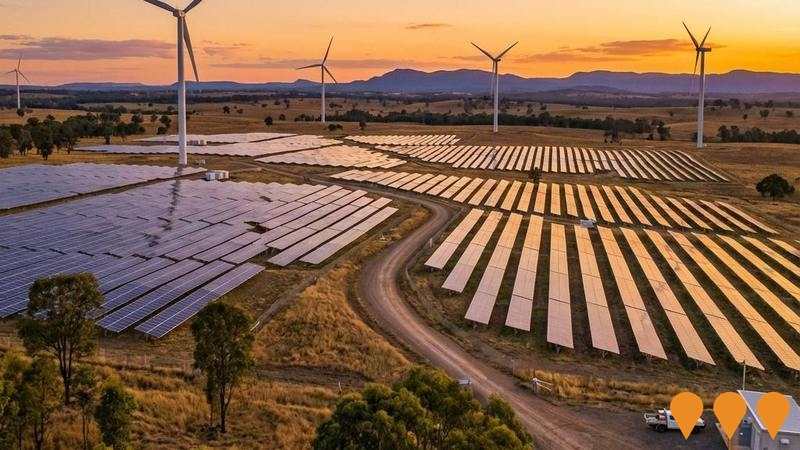
Queensland Energy and Jobs Plan SuperGrid
The Queensland Energy and Jobs Plan is delivering the Queensland SuperGrid and 22 GW of new renewable energy capacity through Renewable Energy Zones (REZs) across the state. Legislated targets are 50% renewables by 2030, 70% by 2032 and 80% by 2035. Key delivery mechanisms include the Energy (Renewable Transformation and Jobs) Act 2024, the SuperGrid Infrastructure Blueprint, the Queensland REZ Roadmap and the Priority Transmission Investments (PTI) framework. Multiple transmission projects are now in construction including CopperString 2032, Gladstone PTI (Central Queensland SuperGrid), Southern Queensland SuperGrid reinforcements, and numerous grid-scale batteries and pumped hydro projects under active development.
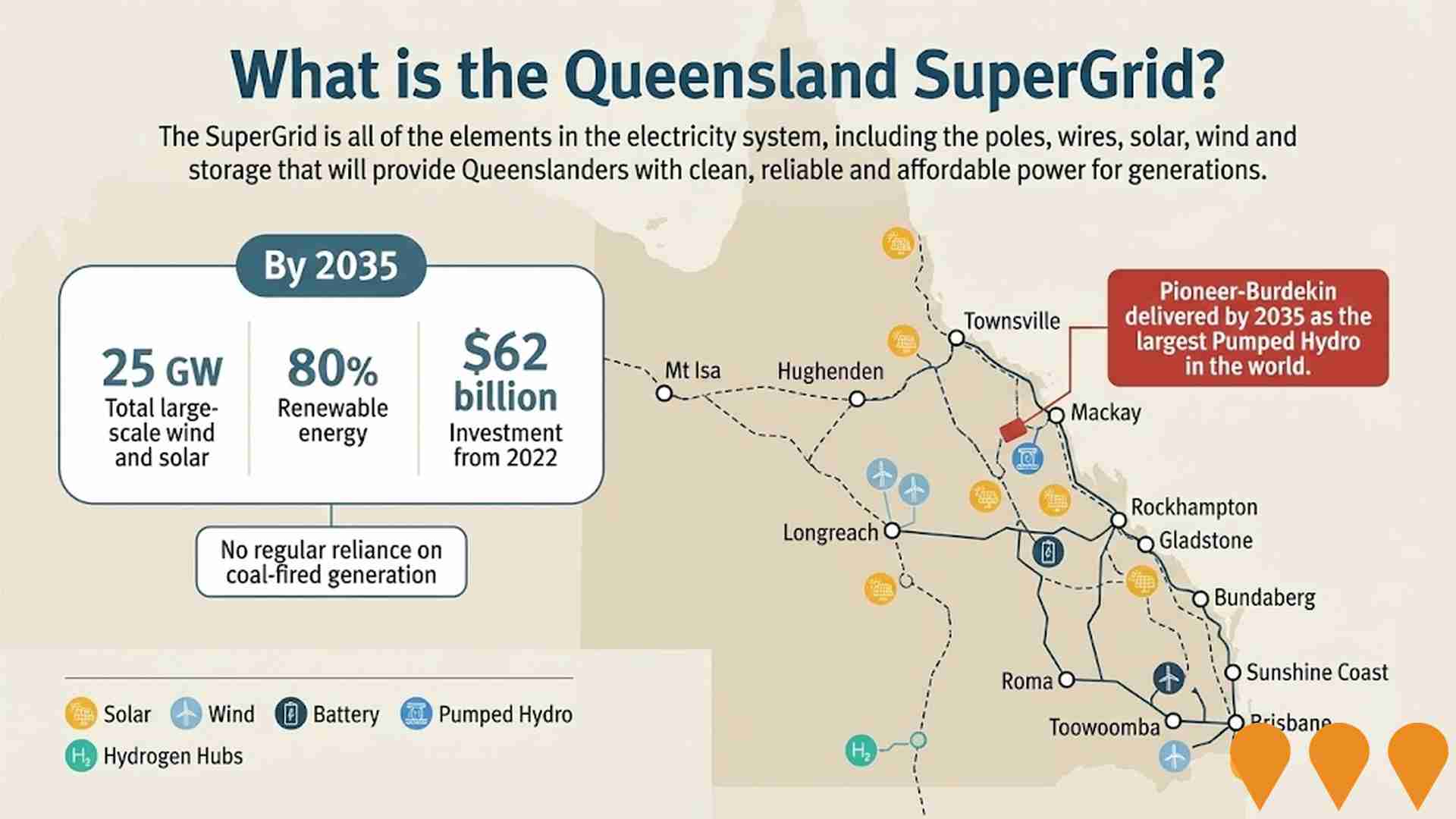
Queensland Energy and Jobs Plan
The Queensland Energy and Jobs Plan is a $62 billion+ statewide program to deliver publicly owned renewable energy generation, large-scale battery and pumped hydro storage, and the Queensland SuperGrid transmission backbone. Targets: 50% renewables by 2030, 70% by 2032, 80% by 2035. Multiple projects are now under construction including CopperString 2032, Pioneer-Burdekin Pumped Hydro, and numerous Renewable Energy Zones.
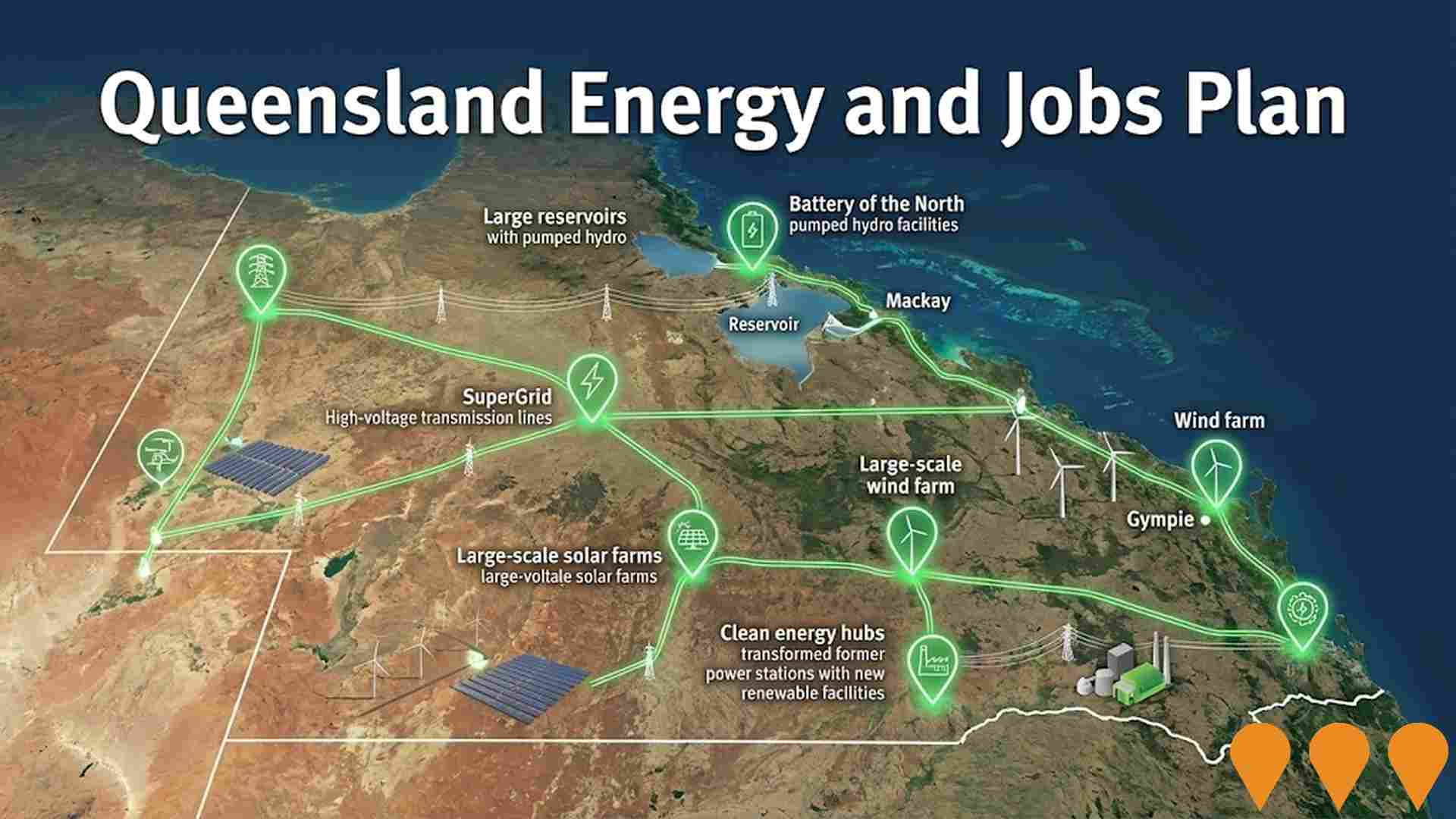
Queensland Energy Roadmap Infrastructure
The Queensland Energy Roadmap 2025 is the State Government's strategic plan to deliver affordable, reliable, and sustainable energy. Replaces the former Energy and Jobs Plan, focusing on extending the life of state-owned coal assets, a $1.6 billion Electricity Maintenance Guarantee, and the $400 million Queensland Energy Investment Fund. Key infrastructure includes the CopperString transmission line and new gas-fired generation, while the Pioneer-Burdekin Pumped Hydro project has been cancelled in favor of smaller storage options.
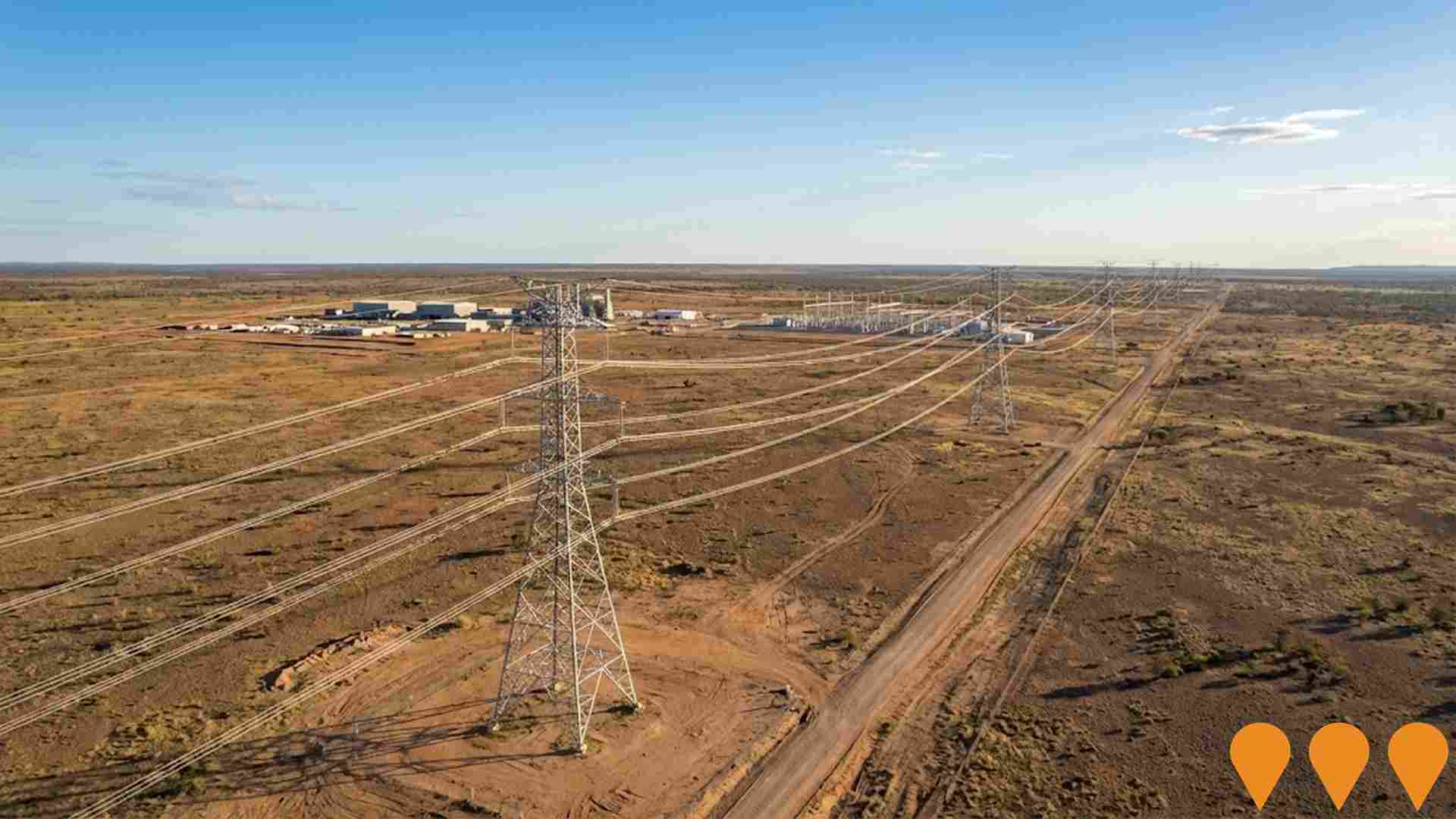
Building Future Hospitals Program
Queensland's flagship hospital infrastructure program delivering over 2,600 new and refurbished public hospital beds by 2031-32. Includes major expansions at Ipswich Hospital (Stage 2), Logan Hospital, Princess Alexandra Hospital, Townsville University Hospital, Gold Coast University Hospital and multiple new satellite hospitals and community health centres.

Bruce Highway Upgrade Program
The Bruce Highway Upgrade Program is Queensland's largest road infrastructure initiative, delivering safety, flood resilience, and capacity improvements along the 1,677km corridor from Brisbane to Cairns. The massive investment program includes the $9 billion Targeted Safety Program, major bypass projects (including Gympie, Rockhampton, and Tiaro), bridge replacements, and wide centre line treatments. Jointly funded by the Australian and Queensland governments, works are progressing across multiple sections simultaneously.
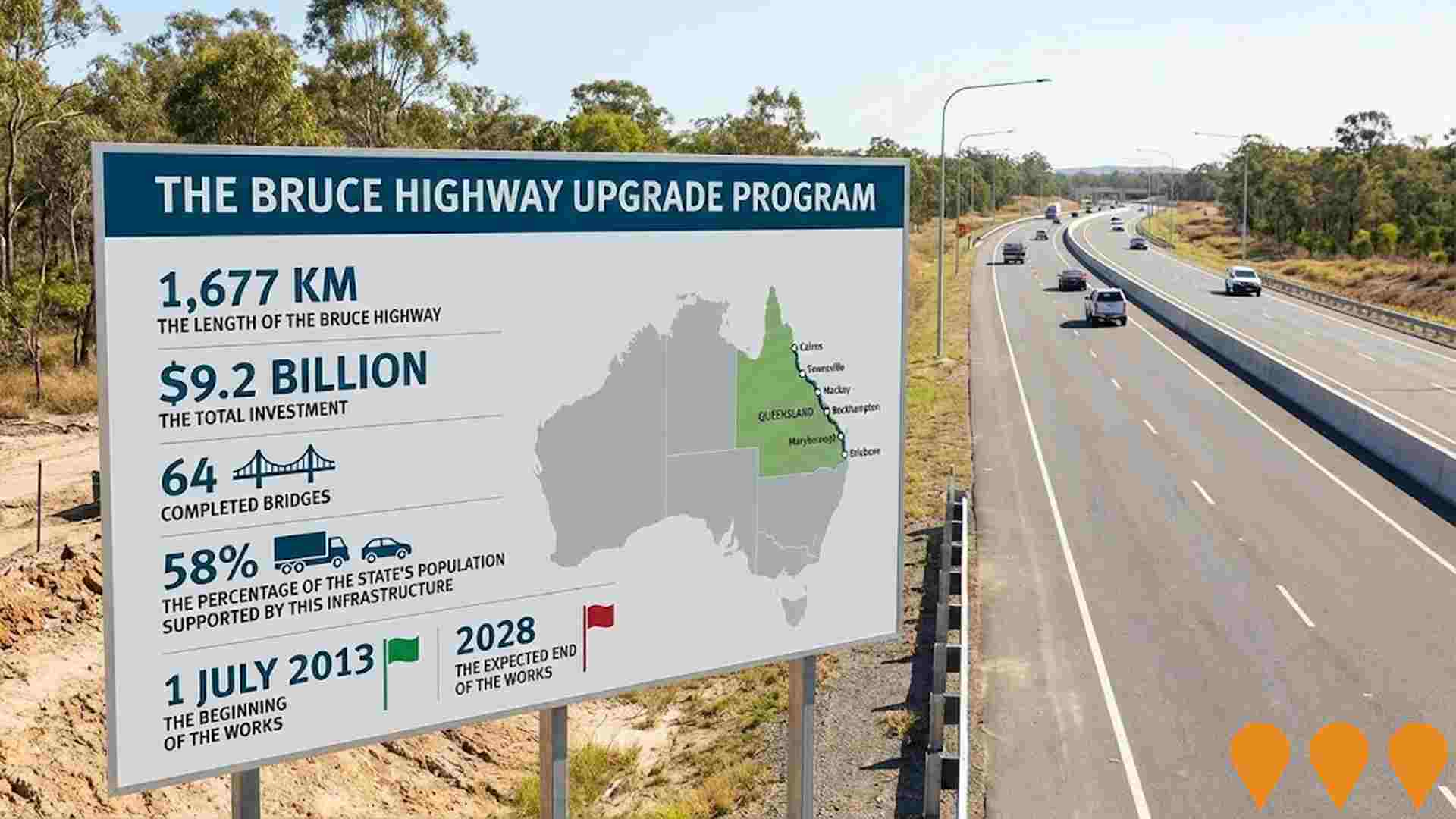
Enabling Digital Health Services for Regional and Remote Australia
National initiative to expand and improve digital health access for people in regional and remote Australia. Focus areas include enabling telehealth and virtual care, upgrading clinical systems and connectivity, supporting secure information exchange, and building workforce capability in digital health, aligned with the Australian Government's Digital Health Blueprint and Action Plan 2023-2033.
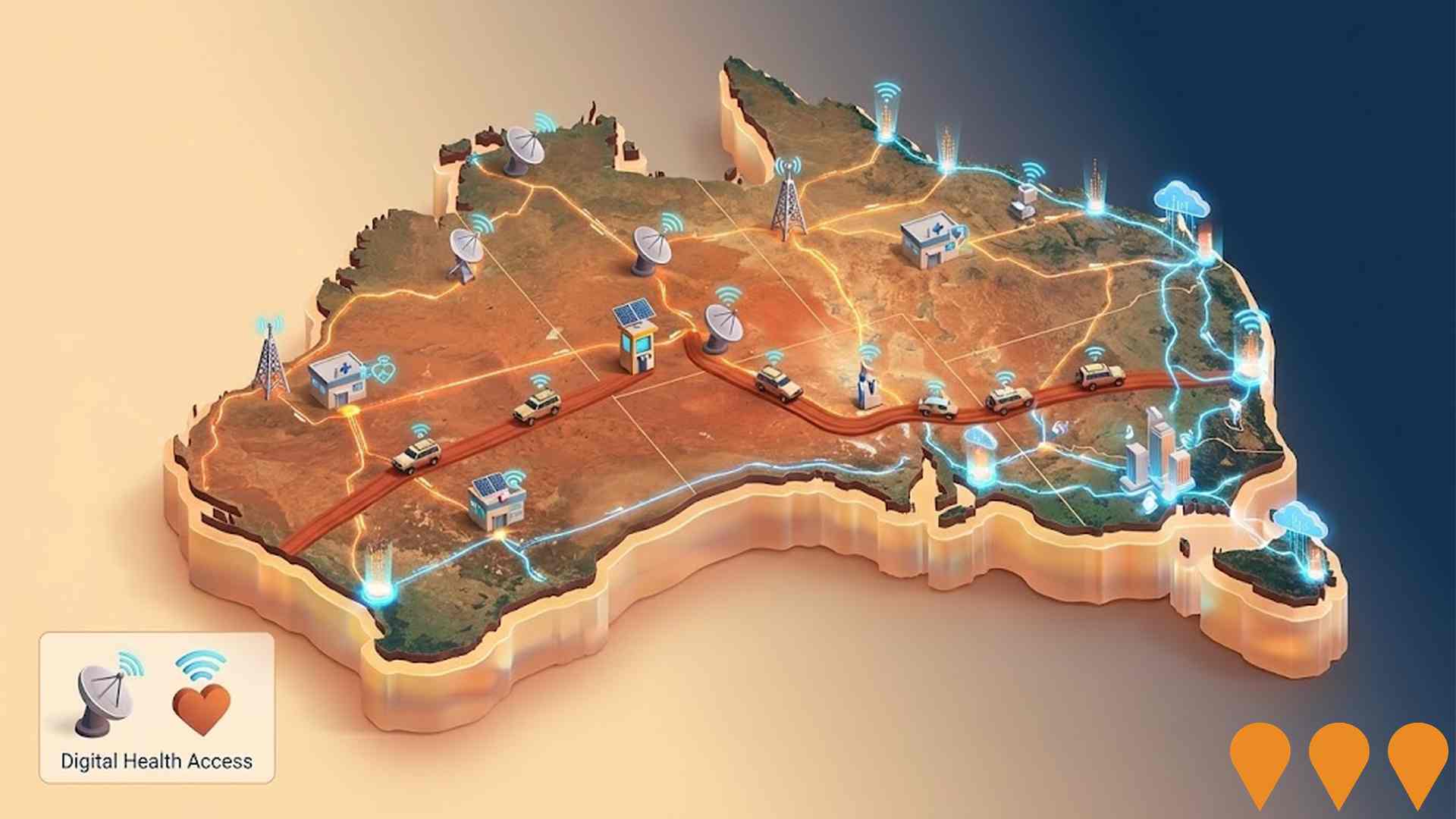
Bruce Highway (Townsville-Ingham) upgrade program
Concurrent upgrades to improve safety and efficiency on the Bruce Highway between Townsville and Ingham. Current scope includes a new northbound overtaking lane between Leichhardt Creek and Lilypond Creek, wide centre line treatments, pavement strengthening near Hencamp Creek, and upgrades to the Christmas Creek rest area (ablutions, turn lanes, heavy vehicle improvements).

Employment
Employment conditions in Palm Island face significant challenges, ranking among the bottom 10% of areas assessed nationally
Palm Island's workforce is balanced across white and blue-collar jobs, with essential services well represented. The unemployment rate was 77.5% as of June 2025.
This rate is 73.6% higher than Rest of Qld's rate of 3.9%. Workforce participation on Palm Island lags significantly at 26.7%, compared to Rest of Qld's 59.1%. Employment is concentrated in health care & social assistance, education & training, and public administration & safety. Health care & social assistance has particularly notable concentration, with employment levels at 2.2 times the regional average.
Construction, however, is under-represented, with only 2.5% of Palm Island's workforce compared to 10.1% in Rest of Qld. Over the 12 months to June 2025, labour force levels decreased by 1.4%, while employment declined by 29.1%, causing unemployment to rise by 8.8 percentage points. In contrast, Rest of Qld experienced employment growth of 1.8% and labour force growth of 2.0%. Jobs and Skills Australia's national employment forecasts from May 2025 project national employment growth of 6.6% over five years and 13.7% over ten years. Applying these projections to Palm Island's employment mix suggests local growth of approximately 7.8% over five years and 16.2% over ten years.
Frequently Asked Questions - Employment
Income
Income levels sit below national averages according to AreaSearch assessment
AreaSearch's latest postcode level ATO data for financial year 2022 shows Palm Island's median income among taxpayers is $52,111, with an average of $63,302. This is just below the national average, compared to Rest of Qld's median of $50,780 and average of $64,844. Based on Wage Price Index growth of 13.99% since financial year 2022, current estimates would be approximately $59,401 (median) and $72,158 (average) as of September 2025. According to 2021 Census figures, household, family and personal incomes in Palm Island all fall between the 1st and 3rd percentiles nationally. Income distribution shows that 26.8% of the community earns between $800 and $1,499 (625 individuals), unlike surrounding regions where 31.7% fall within the $1,500 to $2,999 range. Housing costs are modest with 87.4% of income retained, but total disposable income ranks at just the 6th percentile nationally.
Frequently Asked Questions - Income
Housing
Palm Island is characterized by a predominantly suburban housing profile, with a higher proportion of rental properties than the broader region
Palm Island's dwelling structure, as per the latest Census, consisted of 87.7% houses and 12.3% other dwellings (semi-detached, apartments, 'other' dwellings). In comparison, Non-Metro Qld had 89.5% houses and 10.5% other dwellings. Home ownership in Palm Island was at 1.5%, with the rest being mortgaged (0%) or rented (98.5%). The median monthly mortgage repayment was $2,167, above Non-Metro Qld's average of $1,863. The median weekly rent was $125, lower than Non-Metro Qld's $202 and the national average of $375.
Frequently Asked Questions - Housing
Household Composition
Palm Island has a typical household mix, with a higher-than-average median household size
Family households account for 76.4% of all households, including 27.5% couples with children, 11.1% couples without children, and 30.0% single parent families. Non-family households make up the remaining 23.6%, with lone person households at 21.3% and group households comprising 3.6%. The median household size is 3.7 people, which is larger than the Rest of Qld average of 2.3.
Frequently Asked Questions - Households
Local Schools & Education
Palm Island faces educational challenges, with performance metrics placing it in the bottom quartile of areas assessed nationally
The university qualification rate in the area is 6.8%, significantly lower than the Australian average of 30.4%. This presents both a challenge and an opportunity for targeted educational initiatives. Bachelor degrees are the most common at 4.4%, followed by postgraduate qualifications (1.4%) and graduate diplomas (1.0%). Vocational pathways account for 21.7% of qualifications among those aged 15+, with advanced diplomas making up 3.8% and certificates 17.9%.
Educational participation is high, with 30.1% of residents currently enrolled in formal education. This includes 20.8% in primary education, 6.3% in secondary education, and 0.6% pursuing tertiary education. The area has two schools serving 459 students: Bwgcolman Community School and St Michael's Catholic School. The educational mix includes one primary school and one K-12 school.
Frequently Asked Questions - Education
Schools Detail
Nearby Services & Amenities
Transport
No public transport data available for this catchment area.
Frequently Asked Questions - Transport
Transport Stops Detail
Health
Palm Island's residents boast exceedingly positive health performance metrics with common health conditions somewhat prevalent across both younger and older age cohorts
Palm Island's health outcomes show notable results with common conditions prevalent across both younger and older age groups.
Private health cover stands at approximately 51% (~1,195 people), slightly lower than the average SA2 area. Diabetes and heart disease are the most common medical conditions, affecting 7.2% and 4.3% of residents respectively. However, 83.7% report no medical ailments, higher than Rest of Qld's 66.2%. The area has 7.4% (172 people) aged 65 and over, lower than Rest of Qld's 24.3%. While health outcomes among seniors require more attention, overall, Palm Island's health profile shows positive indicators.
Frequently Asked Questions - Health
Cultural Diversity
In terms of cultural diversity, Palm Island records figures broadly comparable to the national average, as found in AreaSearch's assessment of a number of language and cultural background related metrics
Palm Island's cultural diversity aligns with its region's average: 94.2% are citizens, 98.3% were born in Australia, and 56.6% speak English only at home. Christianity dominates Palm Island (82.2%), compared to 70.7% across Rest of Qld. The top three ancestry groups on Palm Island are Australian Aboriginal (74.0%, significantly higher than the regional average of 8.1%), Other (16.4%, also significantly higher), and Australian (4.3%, notably lower than the regional average of 27.4%).
In terms of ancestry (country of birth of parents), the top three represented groups in Palm Island are Australian Aboriginal, comprising 74.0% of the population, which is substantially higher than the regional average of 8.1%, Other, comprising 16.4% of the population, which is substantially higher than the regional average of 4.6%, and Australian, comprising 4.3% of the population, which is notably lower than the regional average of 27.4%.
Frequently Asked Questions - Diversity
Age
Palm Island hosts a very young demographic, ranking in the bottom 10% of areas nationwide
Palm Island's median age at 26 years is significantly younger than Queensland's average of 41 years and is substantially below Australia's median age of 38 years. Compared to the rest of Queensland, Palm Island has a higher proportion of residents aged 5-14 (19.7%) but fewer residents aged 65-74 (5.3%). This concentration of 5-14 year-olds is notably higher than the national average of 12.2%. Post-2021 Census data indicates that the age group 35 to 44 has increased from 10.8% to 12.3%, while the 75 to 84 cohort has risen from 0.9% to 2.0%. Conversely, the 5 to 14 age group has decreased from 21.2% to 19.7%, and the 45 to 54 age group has fallen from 11.6% to 10.3%. Demographic projections suggest that Palm Island's age profile will undergo significant changes by 2041, with the 25 to 34 age cohort projected to grow steadily, adding 108 people (29%) from 375 to 484 residents. Conversely, population declines are forecast for the 15 to 24 and 5 to 14 age groups.




